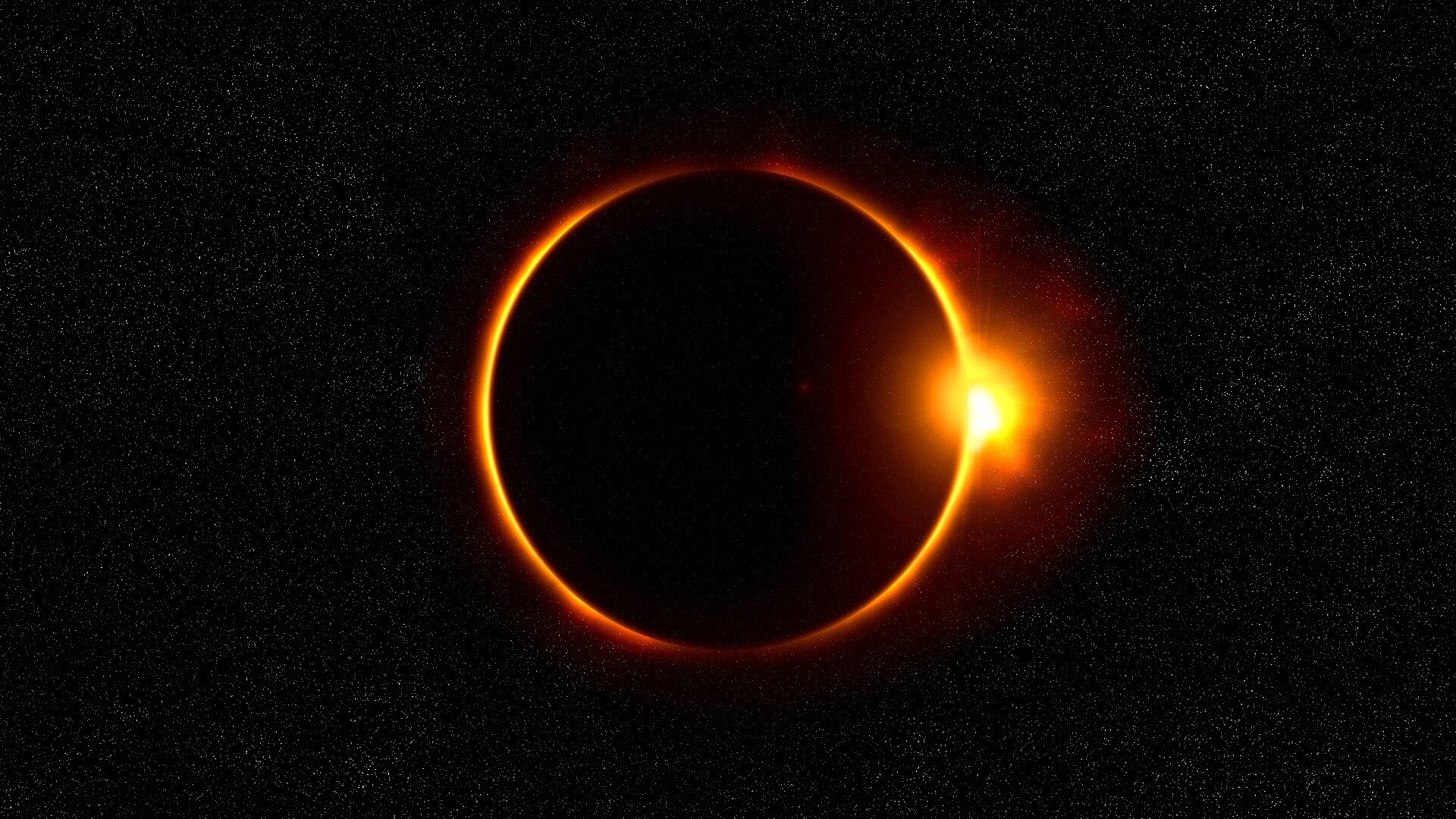Solar Eclipse

- 08 Apr 2024
Why is it in the News?
On Monday (April 8), a total solar eclipse will cross North America, passing over Mexico, the United States, and Canada. This type of solar eclipse is a rare event for any particular spot.
What is a Solar Eclipse?
- A solar eclipse takes place when the Moon moves in the middle of Earth and the Sun.
- The Moon blocks the light of the Sun, either fully or partially, which casts a huge shadow on some parts of the world.
There are four different types of solar eclipses, including:
- Total solar eclipse: When the Moon blocks the Sun entirely, the areas in the center of the Moon’s shadow at the time witness a total solar eclipse.
- The sky darkens and people who are in the path of a total solar eclipse can get a glimpse of the Sun’s corona — the outer atmosphere — which is usually not visible due to the bright face of the Sun.
- Annual solar eclipse: When the Moon passes in front of the Sun but is at or near the farthest point from Earth, an annular solar eclipse occurs.
- In this scenario, the Moon covers the Sun in such a way that only the periphery of the Sun remains visible — looking like a ring of fire.
- Partial solar eclipse: A partial solar eclipse takes place when the Moon blocks just a part of the Sun, giving it a crescent shape.
- During both partial and annular eclipses, the regions outside the area covered by the Moon’s umbra — the middle and the darkest part of the lunar shadow — will see a partial solar eclipse.
- Partial solar eclipse is the most common type of solar eclipse.
- Hybrid solar eclipse: A hybrid solar eclipse — the rarest type of solar eclipse — is witnessed when an eclipse shifts between annular and total as the shadow of the Moon moves across the globe.
- In this case, some parts of the world see a total solar eclipse, while others observe an annular solar eclipse.
How Often Does a Solar Eclipse Take Place?
- A solar eclipse is witnessed only during the new moon — when the Moon and Sun are aligned on the same side of Earth.
- A new moon occurs about 29.5 days because that is how long it takes the Moon to orbit Earth.
- This, however, does not mean that a solar eclipse happens every month. It takes place only between two to five times annually, because the Moon does not orbit Earth in the same plane as the Earth orbits the Sun.
- In fact, the Moon is tilted by about five degrees with respect to Earth.
- As a result, most of the time when the Moon is in between the Sun and Earth, its shadow is either too high or too low to fall on the Earth.
Why is a Total Solar Eclipse so Rare?
- While there can be between two and five solar eclipses every year, total eclipses only happen about once every 18 months or so.
- This is because a total eclipse is only visible if one is standing in the umbra — the other part of the shadow is called the penumbra, which is not as dark as the umbra.
- The umbral shadow is very small, covering only a small part of Earth.
- In fact, the entire path of the umbral shadow during a solar eclipse will only cover less than one percent of the globe.
- This is why only very few people will get to see a total eclipse at a time.
- Moreover, about 70 percent of the globe is underwater and half of the land is considered uninhabited.
- That’s why, it is quite rare when a total solar eclipse happens and a lot of people get to see it.
Umbra and Penumbra:
- During a solar eclipse, the Moon comes between the Earth and the Sun, casting a shadow on the Earth's surface.
- This shadow consists of two main parts: the umbra and the penumbra.
- The umbra is the central, darkest part of a shadow, such as during a total solar eclipse when the Moon completely covers the Sun.
- The penumbra is the outer part of the shadow where the obscuration is partial, resulting in a partial solar eclipse.
